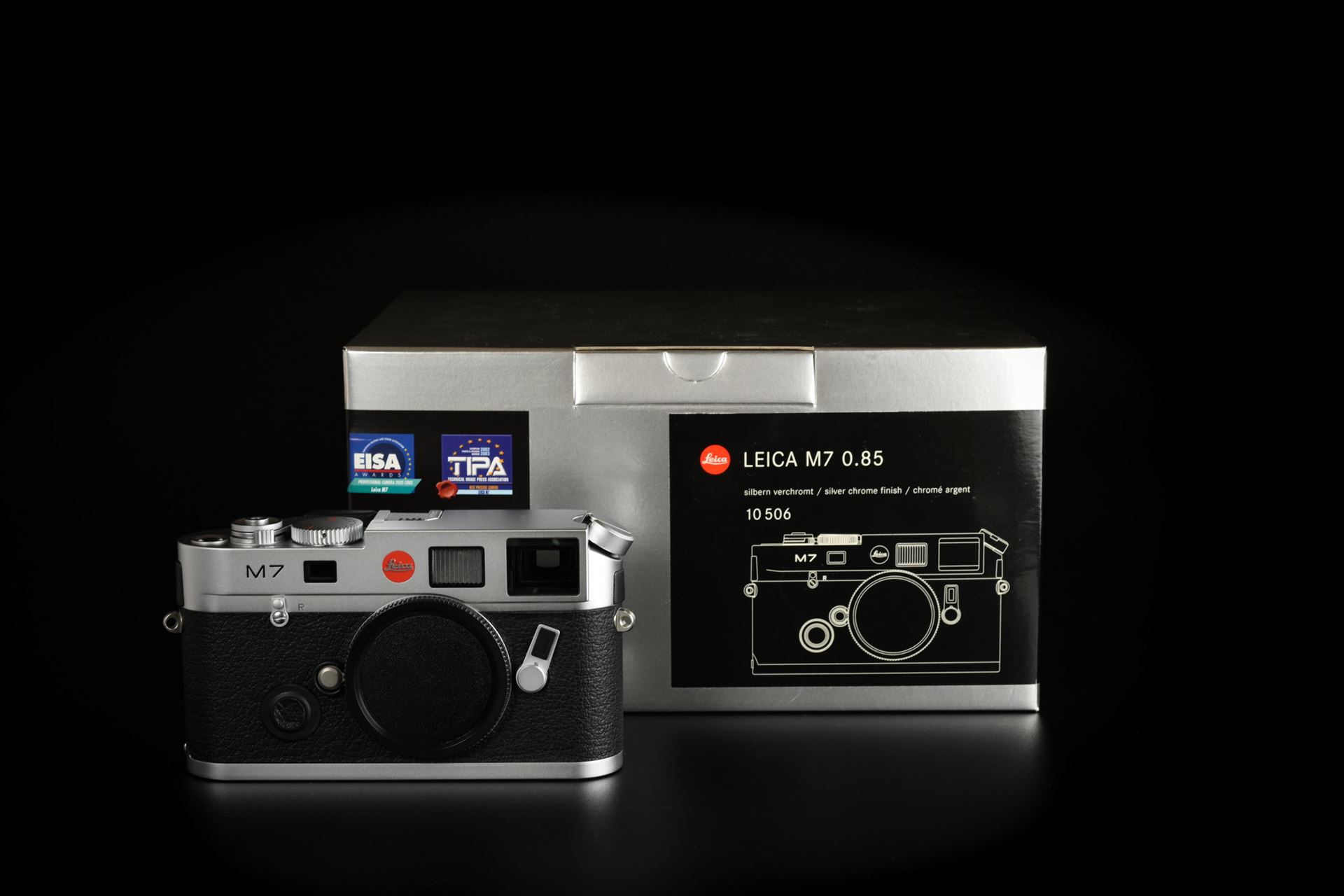

The top shutter speed was capped at 1/4000s over the original 1/8000s to make it quieter, smoother and place less stress on the mechanism. The M8.2 (and upgraded M8s) was a bit of an evolution of the original M8. Read more about Leica Lens Codes in our comprehensive article. Quality varies widely from cheap eBay flanges to custom made brass. One could also swap the lens' mounting flange with one that's machined with the necessary pits and coded as-needed. More recent lenses from third-parties offer a shallow groove on the mounting flange in an effort to make hand coding last longer (by not wearing off). One could also "hand code" the lenses using a black Sharpie marker or paint along with a template. Third parties such as Cosina/Voigtländer and Zeiss do not offer it and lenses must be sent to a skilled repairperson for permanent coding. It's worth noting that only Leica lenses after 2006 come from the factory (or can be sent in for) 6-bit coding. A sensor on the camera side reads these for automatic selection. A group of six small pits on the lens mounting flange that are either black (off) or white (on). Leica accomplished this by introducing us to "6-bit coding" (which is used on all digital M bodies and lenses since). There are no options for other magnifications as with previous (film) bodies.Īdditional correction was applied through the firmware, depending on the lens mounted.

Another thing the M8, M8.2 and in fact, all digital M bodies share is the new standard of a. As you move out from the center of the sensor, the microlenses are offset increasingly - which gathers the light more effectively. The solution was to offset the microlenses above each photosite. With these short distances, the light spreads at a relatively wide angle. Due to LTM/M lenses generally having shorter distances from the rear of the lens to the film/sensor (especially wide angles) than typical SLRs - created a unique challenge for Kodak/Leica. The M8 and M8.2 share a common 10.3MP CCD sensor (Kodak KAF-10500) which is an unusual size of 27x18mm - creating a 1.33x crop as compared to a more typical 1.3x. The forward-thinking decision to exclude an anti-alias/anti-moire ("AA") filter and a minimal infrared ("IR") blocking filter gave the M8 extremely good image quality, but caused issues with IR contamination of images (the so-called "magenta issue"), causing Leica to give away two UV/IR filters to owners under a limited program. A custom sensor had to be developed to allow the use of existing M (and adapted LTM) lenses. The M8 marks Leica's entry to the digital realm no easy feat given the requirement of maintaining the M body aesthetics and form factor. Like the M6/M6 TTL (and unlike the M7 onwards) the shutter mechanism is controlled mechanically and requires no battery to operate at any speed. Among the refinements include a rangefinder mechanism which reintroduces the condenser removed starting with the M4-2, brass top and base plates and engraving rather than stamping of the top plate scripts. Leica calls it the MP for "Mechanical Perfection" and is the modern version of the original MP (which were based on a modified M3 and thus the styling). Essentially an M6 with M3-style design elements (controls) and metering of the M6 TTL/M7 (without the TTL part) with a return to high quality components and construction. The MP is a bit of a mix between old and new. This is an important distinction for some over the mechanically-controlled shutters of other bodies. However, it now depends on a battery for operation outside of two fall-back speeds of 1/160s and 1/125s which become mechanically controlled should the battery die. After 22 years, for the M7 (and the following MP) Leica returns to using brass for the top and base plates.Īnother feature of the new electronics comes in the form of an electronically-controlled shutter in the M7 that's both quieter and more accurate. Later M7 bodies had both the updated MP viewfinder and optical DX reader. The DX reader could also be updated - the original was electromechanical whereas the revised reader is optical (in some cases problems were noted with the original). 85 magnifications besides the standard of. Early viewfinders were able to be updated to the MP version (which reintroduces the condenser removed starting with the M4-2) and is available in. > Click here instead for large (1,688x1,200 pixel) complete Leica family tree " to "> o o <") it also offers an LED readout of shutter speed, which remains in use up through the latest M9-P.


 0 kommentar(er)
0 kommentar(er)
